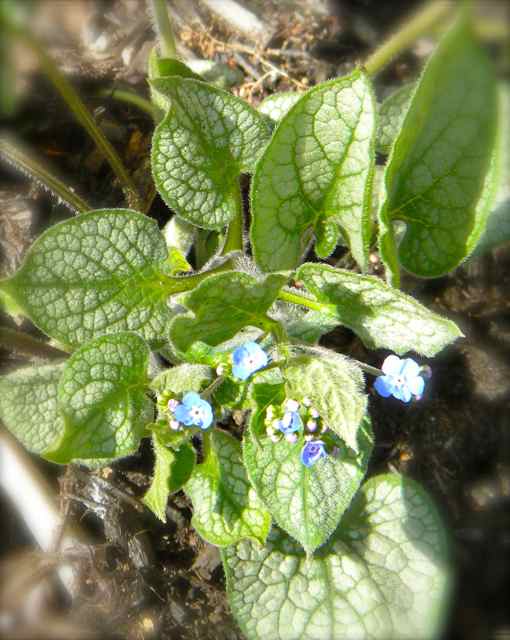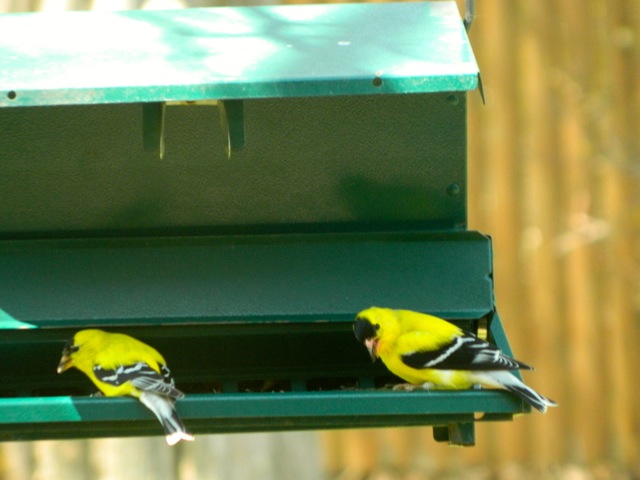My garden is radiant with gorgeous daffodils. Their lovely faces brighten this miserably cold April day. Undaunted by the biting wind and snow flurries, they exude everything SPRING.
She
turned to the sunlight
And shook her yellow head,
And whispered to her neighbor:
"Winter is dead.”
And shook her yellow head,
And whispered to her neighbor:
"Winter is dead.”
--A.A. Milne
I planted them along the path to the front door. My mother-in-law grew some there many years ago and we remember them fondly, but somehow a landscaper removed them. When I took over the landscaping, I planned on replacing the daffodils, but never got around to it until last fall. I described how we planted them here. When H.H.'s sister visited and happily said, "Mom's daffodils are back!" I wished I had replaced them sooner. After all, I have daffodils in many other areas of the garden.
 |
| Daffodil Walk |
 |
| What a miracle, that these turned into such beautiful flowers! |
 |
| These are White Flower Farm's weatherproof daffodil mixture -- good choice considering our weather! |
There is confusion over the name of this plant. Is it daffodil, narcissus or jonquil? According to the University of Missouri, "both daffodil and narcissus are correct. Narcissus is the generic botanical name given these plants in 1753. In England, however, the plants were commonly known as daffodils. This term was carried to other countries by English-speaking people. Jonquil refers to a specific kind of narcissus, and is not correct for the group in general. True jonquils have a reedlike leaf and sweet-smelling flowers. Narcissus, then, is the correct botanical name for the genus; daffodil is the correct common name for all members of the genus; and Jonquil correctly refers to one particular division of the genus." -- David Trinklein, Division of Plant Science, U. of Missouri.
 |
| I love the frilly cup of this daffodil. |
I follow Perdue's Department of Horticulture's advice,
I'm not sure what I'll do when the Daffodil Walk's plants die back and start to look ugly. I don't take off the leaves until they are turning brown, as they are still manufacturing food, flowers are forming for the next season, and the bulbs are maturing. If I decide to tie the dying foliage together to make the bed tidier, I must not do it until a month after the flower dies, so it's really not worth the trouble. I feel my best course of action is to plant groundcovers, annuals, or perennials to hide the dying plants. It is a full-sun area, so hostas and ferns (good daffodil companion plants) are not options. Also, the daffodils are planted close together, so there's not much room for planting between them. In my other daffodil beds, the companion plants came before the daffs., so I didn't have this problem. Daylilies are always suitable. What would you plant to hide the dying foliage?"Remove flowers as soon as they begin to fade. This not only makes the plants look better, but it also prevents undesirable seed development. Seed development results in smaller bulbs the next year."
 |
| My favorite with its distinctive corona. |
 |
| This bed is nearly ten years old. |
 |
| Daffodils in the perennial border. |
 |
| Tahiti -- my favorite daffodil. |
 |
| Beautiful bloom waiting in the wings. |
"... my heart with pleasure fills,
and dances with the daffodils."
-- William Wordsworth
Pamela x
-->
~~ I love reading your comments. I hope you leave one so I’ll know you visited!
I look forward to visiting your blog in return.
















